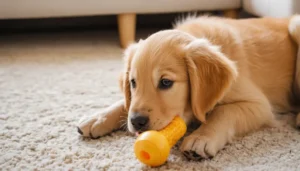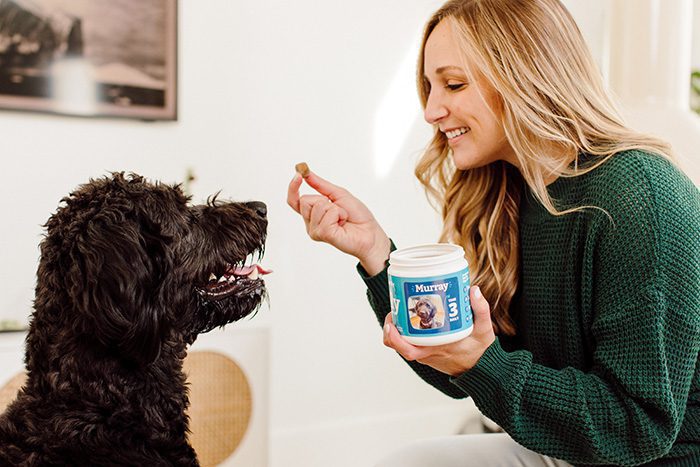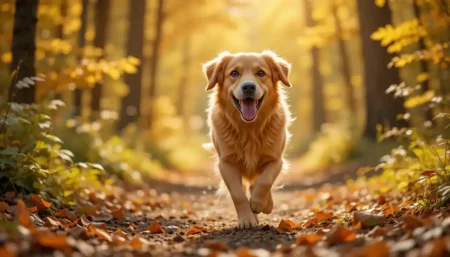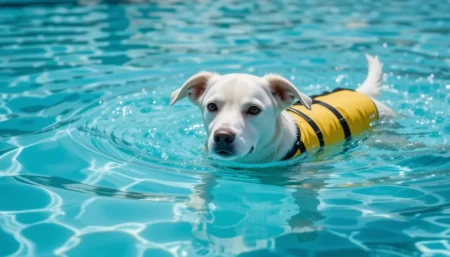Dog chew toys provide essential mental stimulation and behavioral support beyond just saving your furniture. These valuable tools reduce anxiety, prevent destructive habits, and reinforce positive training behaviors.
Discover how the right dog chew toys transform your canine’s daily routine while strengthening your bond.
Why Dogs Need to Chew: More Than Just Instinct
Understanding your dog’s natural chewing behavior reveals why dog chew toys are non-negotiable for responsible pet ownership.
This instinct serves multiple biological and psychological purposes that impact your dog’s overall well-being.
Providing appropriate outlets satisfies these fundamental needs while protecting your home.
Biological Necessity
Puppies chew to relieve teething discomfort as their 28 baby teeth emerge between 3-6 months.
Adult dogs continue this behavior to maintain dental health—chewing scrapes away plaque and stimulates gums.
Without proper outlets, dogs seek alternatives like furniture legs or shoes, causing damage and potential health risks from ingesting unsafe materials.
Behavioral Significance
Chewing releases endorphins that calm dogs during stressful situations like thunderstorms or separation. This self-soothing mechanism helps manage anxiety naturally.
Dogs who lack appropriate chewing opportunities often develop destructive habits or exhibit increased stress behaviors, making quality dog chew toys essential for emotional regulation.

Mental Health Benefits of Dog Chew Toys
Dog chew toys deliver profound psychological advantages that extend far beyond keeping your slippers intact.
These simple tools serve as therapeutic outlets that promote emotional balance and cognitive development in dogs of all ages.
Understanding these benefits helps you select the most effective options for your canine companion.
Anxiety Reduction Through Oral Stimulation
The rhythmic motion of chewing triggers a calming response in your dog’s brain similar to human fidgeting.
This natural stress-reliever lowers cortisol levels during challenging situations like vet visits or fireworks.
For dogs with separation anxiety, leaving a special chew toy creates positive associations with alone time, making departures less traumatic.
Preventing Destructive Behaviors
Boredom often manifests as destructive chewing when dogs lack appropriate outlets.
Dog chew toys redirect this energy toward acceptable targets, preserving your belongings while satisfying instinctual needs.
Puzzle-style chew toys particularly excel here—they engage both mouth and mind, reducing the likelihood of redirected chewing on household items.
Cognitive Stimulation and Brain Health
Interactive chew toys function as “brain gyms” for dogs, strengthening neural pathways through problem-solving activities.
Toys requiring manipulation to release treats build executive function skills similar to human brain games.
Regular mental exercise through dog chew toys may even delay cognitive decline in senior dogs, keeping their minds sharp as they age.
Training Advantages of Using Chew Toys
Strategic use of dog chew toys transforms them into powerful training aids that reinforce desired behaviors.
These versatile tools help shape your dog’s habits while building positive associations with learning.
When incorporated thoughtfully, chew toys become indispensable components of effective training programs.
Positive Reinforcement Mechanics
Dog chew toys serve as excellent rewards during training sessions, providing immediate positive reinforcement.
Unlike food treats, chew toys offer extended engagement that strengthens the connection between behavior and reward.
For example, giving a durable chew toy after successful recall practice creates a powerful association that encourages repetition of the desired behavior.
Redirecting Unwanted Chewing
Teach your dog what’s acceptable to chew through strategic redirection. When you catch them gnawing on inappropriate items, calmly replace the object with an approved chew toy while praising the switch.
Consistency here builds clear boundaries—your dog learns that only designated dog chew toys earn positive attention, accelerating the training process.
Building Impulse Control
Chew toys with delayed reward mechanisms (like treat-dispensing puzzles) teach valuable patience skills.
Dogs learn that working calmly yields better results than frantic behavior—a crucial foundation for advanced obedience training.
Start with simple puzzle toys and gradually increase difficulty as your dog’s self-control improves, reinforcing the connection between calm behavior and positive outcomes.
Types of Dog Chew Toys: Finding the Perfect Match
Selecting appropriate dog chew toys requires understanding the diverse options available and matching them to your dog’s specific needs.
The market offers specialized solutions for different chewing styles, ages, and behavioral challenges.
Knowing these categories helps you make informed choices that maximize benefits while ensuring safety.
Rubber Chew Toys
Durable rubber toys withstand aggressive chewers while providing satisfying texture.
Brands like Kong have become industry standards for good reason—their flexible yet tough construction resists destruction while accommodating treat stuffing for extended engagement.
Freezing rubber toys filled with peanut butter creates a long-lasting cool treat perfect for hot days or anxious moments.
Top 5 Rubber Chew Toys:
- Kong Classic (all-around favorite)
- West Paw Zogoflex (eco-friendly option)
- Nylabone DuraChew (flavored varieties)
- Chuckit! Ultra Ball (bouncy alternative)
- Benebone Wishbone (long-lasting flavor)
Dental Health Chew Toys
Specifically designed to promote oral hygiene, these dog chew toys feature textures that scrape plaque while massaging gums.
VOHC (Veterinary Oral Health Council) approved options provide measurable dental benefits beyond regular brushing.
Look for designs with nubs and ridges that reach difficult areas, reducing tartar buildup and freshening breath naturally.
Puzzle and Treat-Dispensing Toys
These mentally stimulating dog chew toys challenge dogs to work for their rewards, combining physical chewing with problem-solving.
From simple rolling balls to complex multi-step puzzles, they cater to various skill levels.
Start with easier models and progress to advanced puzzles as your dog’s abilities grow, maintaining appropriate challenge without causing frustration.
Natural Chews
Edible chews like bully sticks, antlers, and yak cheese satisfy primal chewing instincts while providing nutritional benefits.
These options work well for dogs who prefer to consume their chews rather than play with them.
Always supervise natural chews and remove small pieces to prevent choking hazards. Choose single-ingredient options to avoid digestive issues from artificial additives.
| Toy Type | Remove if stuffing is exposed. | Durability | Safety Notes |
|---|---|---|---|
| Rubber Toys | Aggressive chewers | ★★★★★ | Supervise for wear |
| Dental Toys | Oral health focus | ★★★☆☆ | Replace when worn |
| Puzzle Toys | Mental stimulation | ★★★★☆ | Remove if stuffing is exposed. |
| Natural Chews | Edible satisfaction | ★★☆☆☆ | Supervise consumption |
| Plush Toys | Gentle chewers | ★★☆☆☆ | Remove if stuffing is exposed |

Choosing the Right Dog Chew Toys for Your Canine
Selecting appropriate dog chew toys requires careful consideration of your dog’s individual characteristics and needs.
A mismatched toy can lead to frustration, disinterest, or even safety hazards.
Matching Toys to Your Dog’s Age
Puppies need softer chews that accommodate developing teeth and jaws, while senior dogs may require gentler options for aging teeth.
Teething puppies benefit from frozen rubber toys that soothe sore gums, whereas adult dogs need more durable options to satisfy stronger jaws.
Always consider the developmental stage when selecting dog chew toys to ensure both safety and effectiveness.
Considering Your Dog’s Size and Strength
Toy size must correspond to your dog’s mouth to prevent choking hazards—small toys become dangerous when broken into pieces.
Large breeds need substantial, durable options that withstand powerful jaws, while toy breeds require appropriately scaled alternatives.
When in doubt, size up rather than down; oversized toys are safer than those that could become choking hazards through normal wear.
Addressing Specific Behavioral Needs
Identify your dog’s primary chewing motivation to select the most beneficial toys.
Anxious dogs benefit from long-lasting chews that provide extended comfort, while bored dogs need puzzle toys that challenge their minds.
Dogs with separation anxiety respond well to special “alone time” chews reserved exclusively for when you’re absent, creating positive associations with your departures.
Safety Considerations with Dog Chew Toys
While dog chew toys offer numerous benefits, safety must remain your top priority when selecting and using them.
Many popular options carry hidden risks that could lead to emergencies if not properly monitored.
Understanding these potential dangers helps you make informed choices that keep playtime both fun and safe.
Recognizing Choking Hazards
Always supervise chew sessions until you know how your dog interacts with a new toy.
Remove any toy that breaks into small pieces that your dog could swallow. Avoid toys with easily detachable parts like eyes or noses that could become choking hazards.
When selecting dog chew toys, choose designs without narrow necks that could get stuck in your dog’s throat during enthusiastic chewing.
Identifying Toxic Materials
Some cheaper dog chew toys contain harmful chemicals like phthalates or BPA that leach into your dog’s mouth during chewing.
Opt for veterinary-approved options made from food-grade materials, especially for dogs who tend to ingest pieces of their chews.
Natural rubber and FDA-approved plastics represent safer choices than unknown manufacturers’ products that may contain questionable ingredients.
Monitoring Wear and Tear
Regularly inspect all dog chew toys for signs of excessive damage that could create hazards.
Replace rubber toys when they develop deep grooves or lose structural integrity. Discard natural chews when they become small enough to swallow whole.
Establish a replacement schedule based on your dog’s chewing intensity—aggressive chewers may need new toys weekly, while gentle chewers can use them for months.
Incorporating Dog Chew Toys into Daily Routines
Strategic integration of dog chew toys into your daily schedule maximizes their benefits while minimizing common behavioral challenges.
Thoughtful placement creates predictable patterns that reduce anxiety and reinforce positive habits.
Establishing Chew Time Rituals
Create specific times for chew toy sessions to build positive associations and prevent random chewing elsewhere.
Morning chew sessions after breakfast help burn energy and set a calm tone for the day. Evening sessions before bedtime provide mental fatigue that promotes better sleep.
Consistent timing teaches your dog when chewing is expected and appropriate, reducing spontaneous destructive behavior.
Using Chew Toys for Transition Periods
Deploy dog chew toys during challenging transitions like arrivals/departures or before vet visits.
A special “travel chew” creates positive associations with car rides, while a “goodbye chew” reduces separation anxiety.
Reserve certain high-value chews exclusively for stressful situations to maximize their calming effect.
This strategic use transforms potentially difficult moments into positive experiences through the power of dog chew toys.
Combining Chew Toys with Other Activities
Integrate chew toys into existing routines for compounded benefits. Freeze puzzle toys filled with broth for a cooling summer treat during outdoor play.
Use dental chews after meals to enhance oral hygiene benefits. Pair chew sessions with training exercises—have your dog perform commands before receiving their special chew.
These combinations maximize the value of each chew session while reinforcing multiple positive behaviors simultaneously.
DIY Chew Toy Solutions and Enrichment Ideas
Creating homemade dog chew toys offers cost-effective enrichment while allowing customization for your dog’s specific preferences.
These simple projects provide mental stimulation through novelty and personalization.
Always prioritize safety when crafting DIY options, ensuring materials won’t harm your dog if ingested.
Household Item Transformations
Repurpose safe household items into engaging chew experiences:
- Freeze stuffed Kongs with yogurt and berries
- Braid old t-shirts into tug toys
- Hide treats inside muffin tins covered with tennis balls
- Create snuffle mats from fleece strips
- Roll treats in old socks for scent work
Safe Natural Alternatives
When commercial options aren’t available, these natural alternatives work well:
- Frozen carrot sticks (supervised)
- Apple slices (seeds removed)
- Plain pumpkin puree frozen in ice cube trays
- Unsalted green beans as crunchy treats
- Small pieces of banana as occasional rewards
FAQs
How many dog chew toys should my dog have available?
Rotate 3-5 different dog chew toys to maintain novelty and interest. Having multiple options prevents boredom while allowing you to match toys to specific needs—like a calming chew for anxiety versus a puzzle toy for mental stimulation. Regular rotation keeps all options feeling fresh and exciting to your dog.
Can dog chew toys replace professional dental care?
While dental chew toys support oral health, they don’t replace professional veterinary dental care. These toys reduce plaque buildup between cleanings but can’t address existing tartar or gum disease. Use them as part of a comprehensive dental routine that includes regular brushing and veterinary checkups for optimal oral health.
When should I introduce chew toys to a new puppy?
Start introducing appropriate chew toys immediately when bringing home a new puppy. Early exposure teaches what’s acceptable to chew while providing relief for teething discomfort. Begin with soft rubber options and frozen teething toys, gradually introducing more durable options as their adult teeth come in around 6 months of age.
How do I get my dog interested in chew toys instead of furniture?
Make chew toys more appealing than furniture by adding high-value treats inside puzzle toys or rubbing them with peanut butter. Supervise initial sessions and praise enthusiastically when your dog chooses the toy. Consistently redirect inappropriate chewing to approved options while removing access to off-limits items during the learning phase.
Are there dog chew toys specifically for aggressive chewers?
Yes, look for “indestructible” rubber toys designed for power chewers, like those made from ultra-durable polymers. Avoid flimsy toys that break quickly—opt for one-piece designs without small parts. Always supervise aggressive chewers and inspect toys frequently for wear. Some manufacturers specialize in extremely durable options that withstand even the most determined chewers.
Conclusion
Dog chew toys represent essential tools for promoting your canine’s mental wellness and supporting effective training. These simple items satisfy biological needs while preventing destructive behaviors and reducing anxiety.
By selecting appropriate options for your dog’s age, size, and temperament, you create valuable outlets that enhance daily life for both of you.
Remember to rotate toys regularly, prioritize safety through supervision and inspection, and use chew sessions strategically during challenging transitions.
Start today by introducing one new puzzle toy—fill it with a small amount of peanut butter and freeze it overnight.
This simple step provides immediate mental stimulation while building positive associations that transform potential chewing problems into opportunities for connection and calm.
Your thoughtful approach to dog chew toys will yield happier, healthier results for your entire household.









